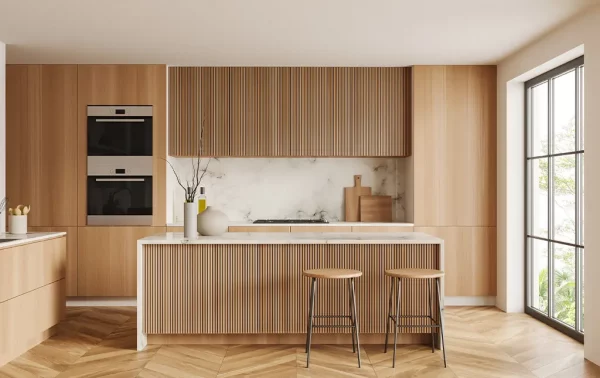ICA
Key takeaways:
- Polyurethane vs Melamine: Learn the key differences to make an informed choice.
- Understand what Melamine polish is.
- Learn how ICA PU polish improves durability with its properties.
- Comprehend the difference between Melamine and PU polish.
- Learn what difference ICA PU polish can make and how effective melamine is for moisture-prone areas.
In the world of furniture and interior design, the choice of finishes plays a pivotal role in enhancing both aesthetics and durability. Among the options available, two popular contenders, PU (Polyurethane) polish and Melamine, stand out for their unique characteristics and applications. As you seek the perfect balance between beauty and functionality, understanding the nuances of these finishes becomes important.
In this article, we delve into the distinct features of polyurethane vs melamine, unravelling their strengths and limitations to guide you in making informed decisions for your next project.
Composition and Properties
When applied to surfaces, PU finish is a synthetic material that forms a durable coating. With ICA PU paint finishes you can also choose from a plethora of colours and textures of your preference, all offering high resistance to abrasion, chemicals, and UV rays. There are two types of finishes – solvent-based and water-based PU polish, which can be used on all wooden surfaces.
Now, let’s understand, what is melamine polish? Well, Melamine is a type of laminate made by compressing layers of paper or fabric with melamine resin. It gives surfaces a smooth and glossy finish and is commonly used on particleboard or MDF (Medium-density fibreboard) surfaces. It is resistant to moisture, heat, and stains, usually used on kitchen cabinets and countertops.
Polyurethane vs Melamine: Appearance
A simple PU finish offers a natural look and can be clear or tinted. With Colore from ICA, you also get to choose from several hues, colours, textures, special effects and more. Along with the creative freedom, PU finishes enhance the natural colour and grain of the wood.
Melamine provides a smooth finish with a glossy surface. It is also available in a range of colours and patterns, making it a versatile option for certain design preferences.
Durability and Suitability
When it comes to durability, both PU finish and melamine have their own strengths. PU finish offers excellent resistance to scratches, chemicals, and UV rays, and is a preferred choice for high-traffic areas and furniture that is exposed to sunlight. On the other hand, melamine is known for its moisture resistance, making it suitable for areas prone to spills and humidity.
Practical Application
The choice between PU finish and melamine often depends on the specific requirements of the surface and the desired aesthetic. Due to its durability and protective properties, PU finish is commonly preferred for wooden furniture, flooring, and exterior surfaces. For example, dining or study tables, chairs, cupboards, temples, etc., with high traffic and potential scratches and abrasions, can benefit from a PU finish.
On the other hand, melamine finds use in kitchen cabinets, countertops, and areas where moisture resistance is crucial.
Making the Right Choice Between PU and Melamine
The choice between PU polish vs melamine polish depends on your specific needs and aesthetic preferences for the surface. However, ICA PU Polish is more versatile, offers extra protection, and is preferred better by homeowners.
By understanding the difference between melamine and PU polish, you can make an informed choice that aligns with your requirements.
ICA offers an extensive range of solvent and water-based PU polishes. To know more about our PU finish range, get in touch with us.









